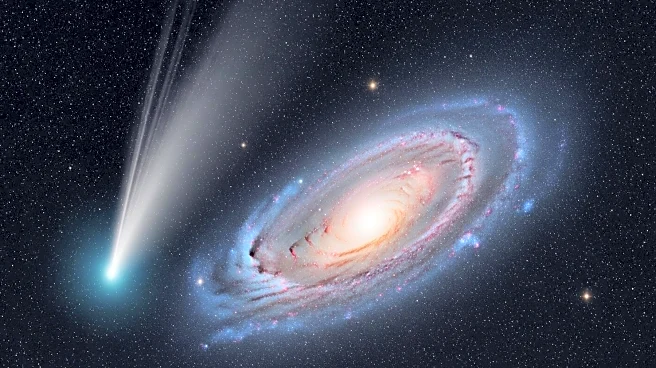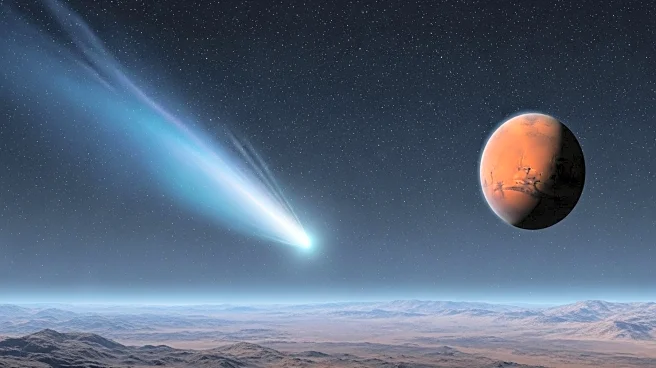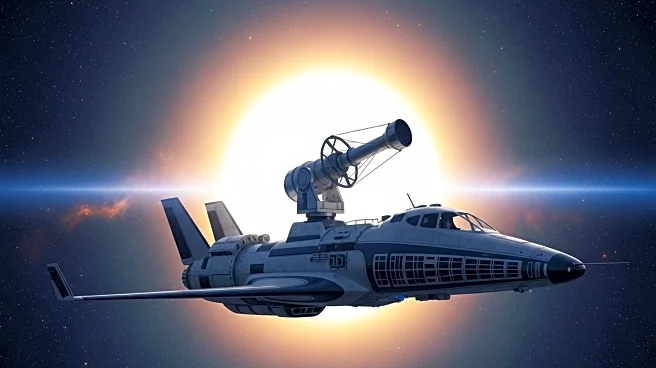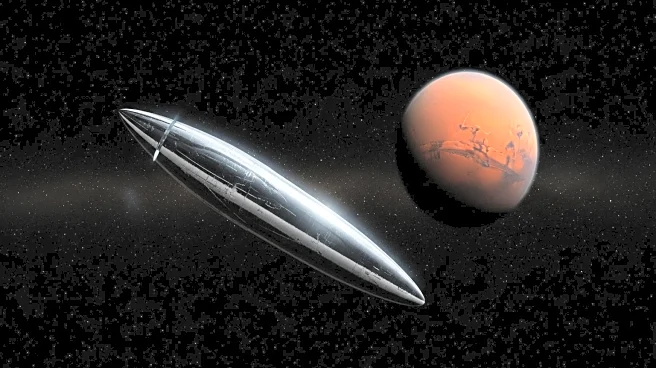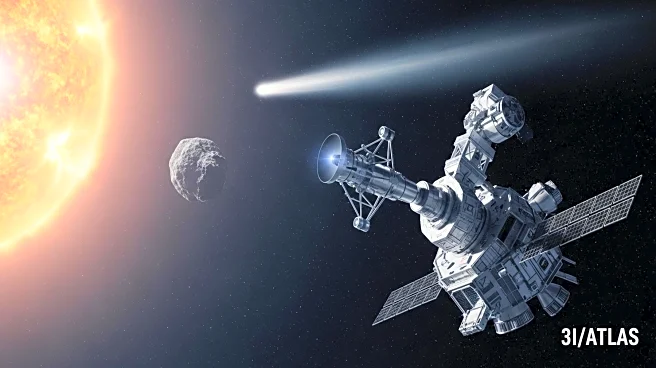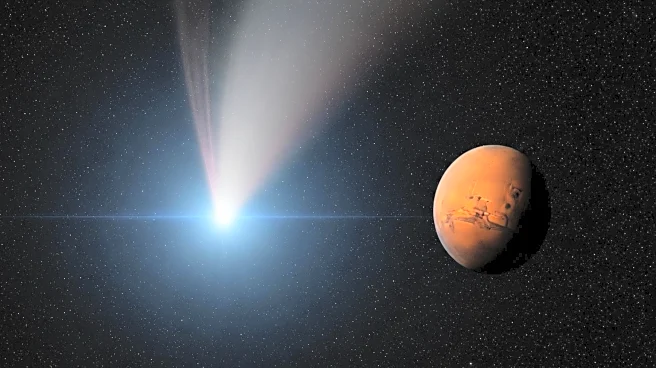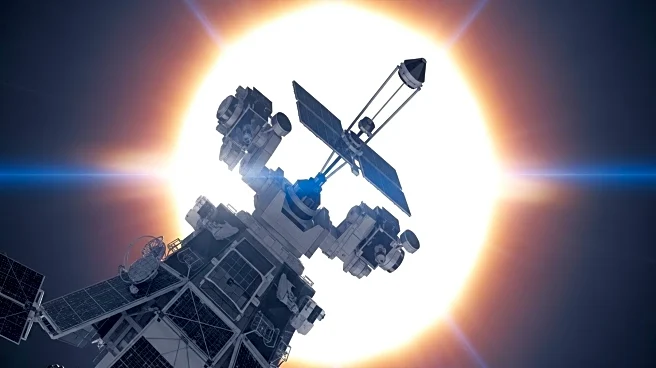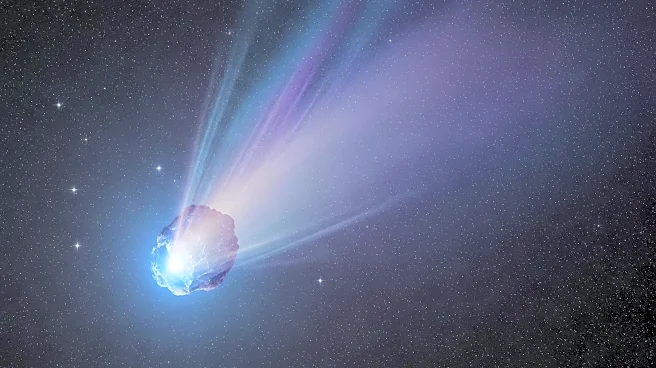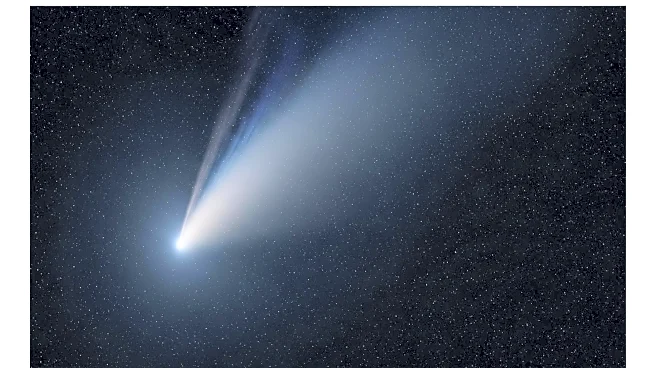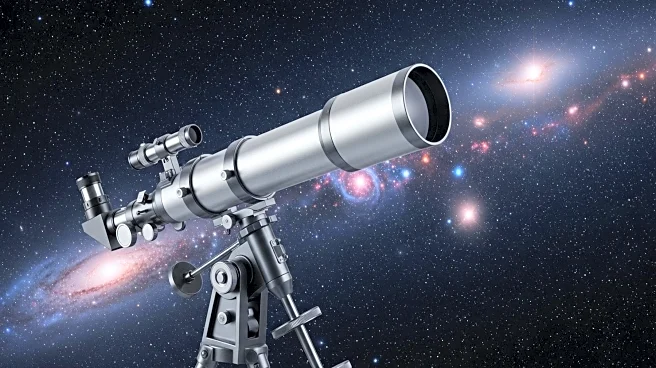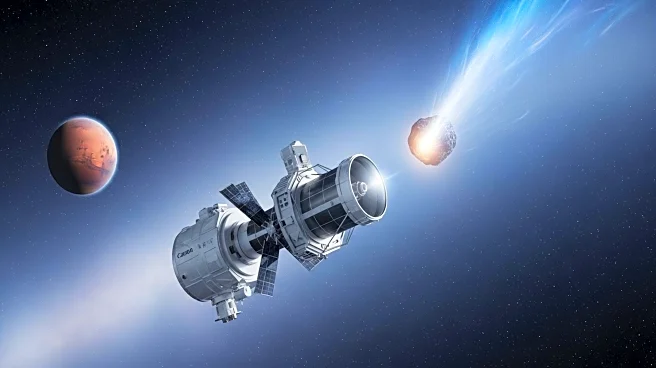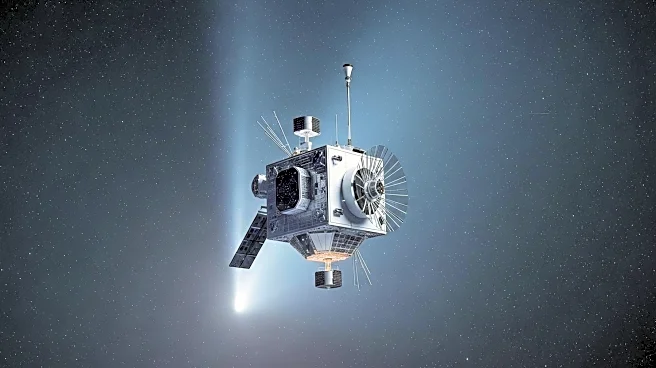What is the story about?
What's Happening?
Astronomers are investigating the origins of the interstellar comet 3I/ATLAS, which is currently traveling through the solar system. Detected in June and confirmed by NASA in July, this comet is the third interstellar object ever identified, following 1I/'Oumuamua and 2I/Borisov. It is notable for its large size, estimated between 3 and 7 miles wide, and its high speed of 130,000 miles per hour. Recent studies suggest that 3I/ATLAS may have originated from the boundary between the Milky Way's thin and thick disks, potentially making it a relic from the early galaxy. The comet is currently on a trajectory that will take it past Mars and the Sun before heading back into interstellar space.
Why It's Important?
The study of 3I/ATLAS provides valuable insights into the composition and history of interstellar objects, which can enhance our understanding of the early Milky Way. The comet's potential origin from the galaxy's frontier suggests it could be billions of years old, offering a glimpse into the conditions of the early universe. This research could also inform future studies on the formation and evolution of planetary systems, as well as the potential for life beyond our solar system. The findings underscore the importance of continued observation and analysis of interstellar objects to unravel the mysteries of our galaxy's past.
What's Next?
As 3I/ATLAS continues its journey through the solar system, scientists will have opportunities to study it in greater detail using instruments on Earth and in space. These observations could provide further clues about its composition and origin. The comet's passage offers a unique chance to gather data that could refine models of interstellar object trajectories and interactions with stars. Future missions and telescopes may focus on detecting similar objects to expand our understanding of the galaxy's history and the potential for life elsewhere.
AI Generated Content
Do you find this article useful?
